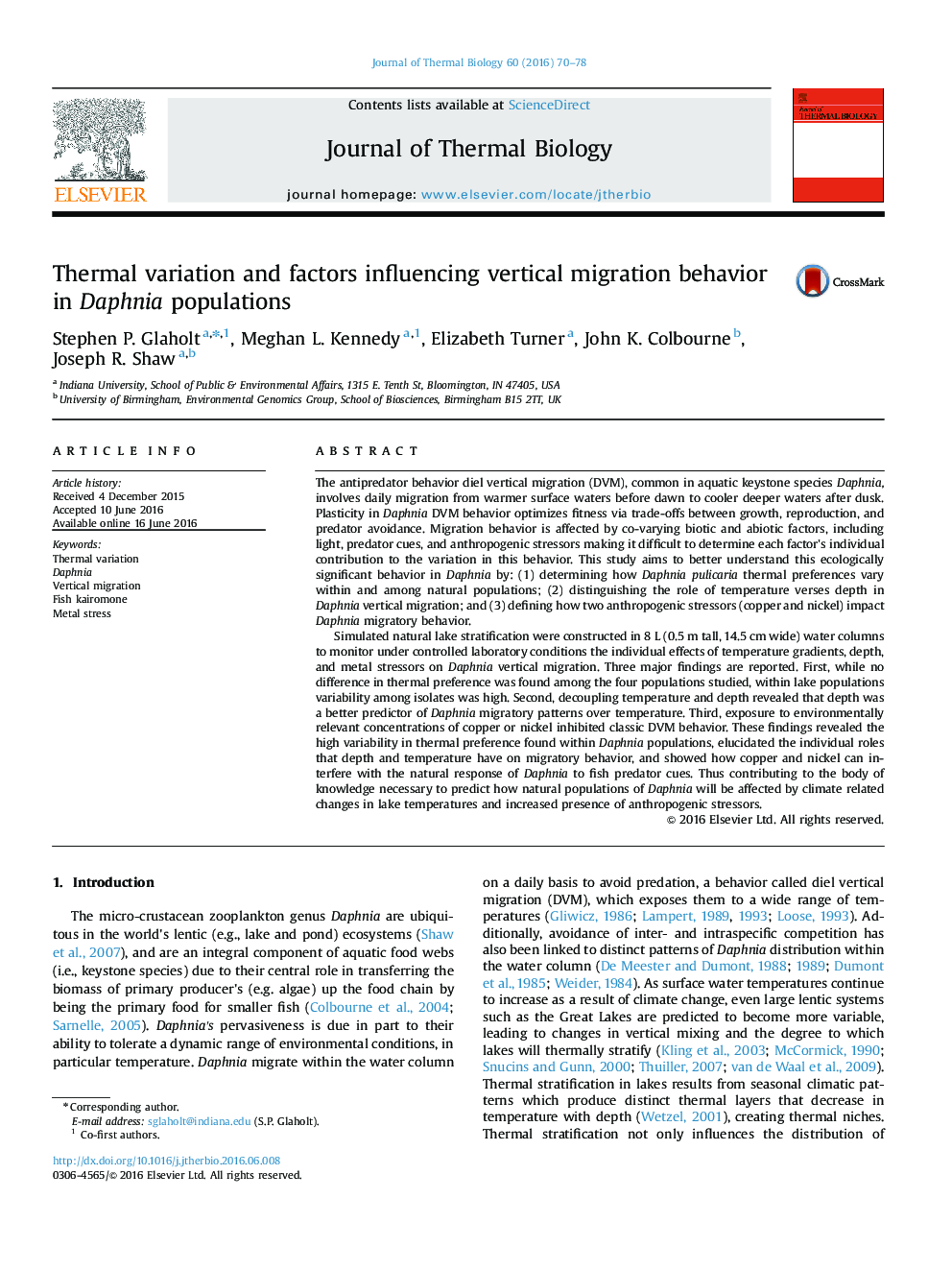| Article ID | Journal | Published Year | Pages | File Type |
|---|---|---|---|---|
| 5922416 | Journal of Thermal Biology | 2016 | 9 Pages |
Abstract
Simulated natural lake stratification were constructed in 8Â L (0.5Â m tall, 14.5Â cm wide) water columns to monitor under controlled laboratory conditions the individual effects of temperature gradients, depth, and metal stressors on Daphnia vertical migration. Three major findings are reported. First, while no difference in thermal preference was found among the four populations studied, within lake populations variability among isolates was high. Second, decoupling temperature and depth revealed that depth was a better predictor of Daphnia migratory patterns over temperature. Third, exposure to environmentally relevant concentrations of copper or nickel inhibited classic DVM behavior. These findings revealed the high variability in thermal preference found within Daphnia populations, elucidated the individual roles that depth and temperature have on migratory behavior, and showed how copper and nickel can interfere with the natural response of Daphnia to fish predator cues. Thus contributing to the body of knowledge necessary to predict how natural populations of Daphnia will be affected by climate related changes in lake temperatures and increased presence of anthropogenic stressors.
Related Topics
Life Sciences
Agricultural and Biological Sciences
Agricultural and Biological Sciences (General)
Authors
Stephen P. Glaholt, Meghan L. Kennedy, Elizabeth Turner, John K. Colbourne, Joseph R. Shaw,
